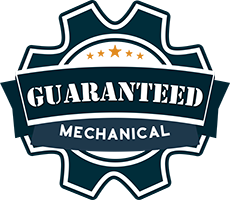Essential Heat Pump Maintenance Checklist for Homeowners: How to Maintain Heat Pump Efficiency and Longevity
Why Is Regular Heat Pump Maintenance Important for Homeowners?
- Energy savings and lower utility bills through optimized heat transfer and airflow.
- Extended equipment life and reduced replacement costs due to fewer overloaded components.
- Improved indoor air quality and consistent comfort by controlling airborne particulates.
How Does Maintenance Improve Heat Pump Energy Efficiency?
What Are the Effects of Neglecting Heat Pump Maintenance?
What Are the DIY Heat Pump Maintenance Tasks Homeowners Can Perform?
- Replace or clean air filters every 1–3 months to maintain airflow and protect the evaporator coil.
- Clear debris and vegetation around outdoor units, maintaining at least 2–3 feet of clearance.
- Inspect and flush condensate drains and pans to prevent clogs and microbial growth.
- Verify thermostat settings, batteries, and schedule basic programming for seasonal modes.
| Component | Recommended Frequency | Tools / Time Estimate |
|---|---|---|
| Air filter | Every 1–3 months | New filter or vacuum cleaning; 5–15 minutes |
| Outdoor unit (debris/vegetation) | Monthly during leaf/flower seasons | Pruner, soft brush, hose; 15–30 minutes |
| Condensate drain | Every 6–12 months or if slow draining | Wet/dry vacuum or brush; 10–20 minutes |
| Thermostat check | Twice a year (season change) | Screwdriver, fresh batteries; 10 minutes |
How to Change and Clean Heat Pump Air Filters Properly?
What Are the Best Practices for Cleaning Outdoor Heat Pump Units?
What Professional Heat Pump Maintenance Services Should Homeowners Schedule Annually?
- Refrigerant level check and leak detection to ensure optimal charge and prevent compressor strain.
- Coil cleaning and fin inspection to restore heat exchange capacity.
- Electrical inspection and tightening of connections to avoid arcing and failures.
- System performance testing including temperature delta, airflow measurement, and safety control verification.
| Inspection Task | Performed By | Expected Outcome |
|---|---|---|
| Refrigerant check | NATE-certified technician | Correct charge, leak identification, restored capacity |
| Coil cleaning | Certified service tech | Improved heat transfer, reduced run time |
| Electrical inspection | Trained technician | Increased reliability, lower risk of faults |
| Performance testing | Certified technician | Documented efficiency metrics and recommendations |
How Should Homeowners Adjust Heat Pump Maintenance for Seasonal Changes?
| Season | Key Tasks | Priority Timing |
|---|---|---|
| Spring/Summer | Clean outdoor unit, check refrigerant, clear condensate drain | Early spring before cooling peak |
| Fall/Winter | Test defrost cycle, calibrate thermostat, check insulation and drafts | Late summer/early fall before heating use |
| Year-round | Replace filters, document service, monitor performance | Ongoing at scheduled intervals |





Recent Comments